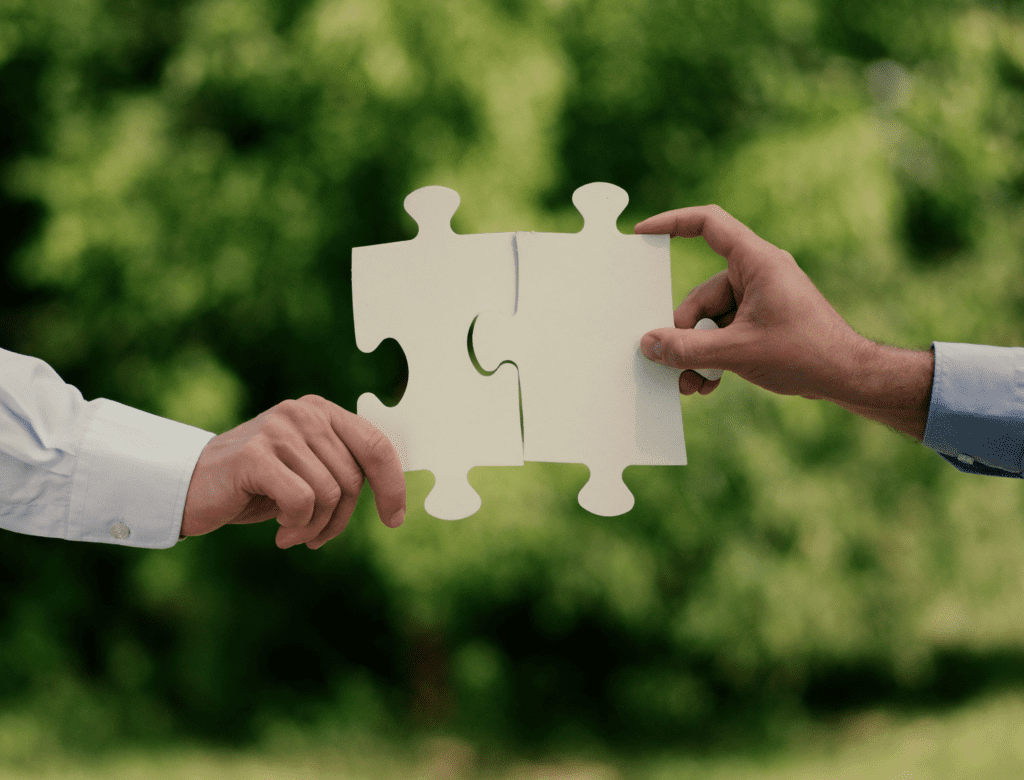
Major gift fundraising is critical for nonprofit organizations. A single major gift often funds an entire program, salaries for staff members, a new building, or simply provides some breathing room—all of which help you serve your organization’s mission even more effectively.
Your major donors typically contribute the majority of your funds, are dedicated to your cause, and often maintain a connection for many years. One of the most valuable things your nonprofit can do is focus your time, energy, and resources on cultivating and maintaining these relationships.
Many nonprofits rely on major gifts but don’t invest in cultivating or soliciting them. This is a big mistake. While it is tempting to rely on the same major donors year after year, you will eventually need new support to continue expanding your nonprofit.
Successful major gift fundraising requires clear goals and a major gift officer (MGO) to oversee all major donations. Implementing a major gift program to work through the fundraising cycle will then propel your major giving program (and your organization) forward.
What is a major gift?
Major gifts are some of the largest donations a nonprofit organization receives. What is considered a major gift will vary depending on the organization’s scope of work, operating budget, community, and fundraising base (local, regional, or international).
A well-established hospital would consider $100,000 to be a major gift whereas a $2,000 donation would really propel a small grassroots organization forward. The median major gift threshold across the U.S. and Canada in 2017 was between $5,000 and $9,999, according to the first-ever Major Gifts Fundraising Benchmark Study.
By way of comparison: Gifts of $1 million or more are referred to as principal gifts and gifts of $10 million or more are classed as mega gifts.
Defining your nonprofit’s “major gift” amount
Patterns in your fundraising data will indicate your nonprofit’s threshold figure for major gifts. You can determine this figure based on a certain percentage of donors or percentage of your budget:
1. Percentage of donors: The Pareto principle (or “80/20 rule”) suggests that your top 20% of donors will typically provide around 80 percent of your funds. Using your internal data, order your current donors from large to small based on their Recency, Frequency, and Monetary (RFM) scores.
-
- Recency: What was the date of the last gift given?
- Frequency: How often did the donor give over the past year?
- Monetary: What was the donation amount(s)? Does it align with your goal?
Draw a line under the top fifth of names. The annual amount given by the smallest donor in that range is your threshold for a “major gift.”
2. Percentage of budget: Work your way down the same list and draw a line under the donation that gets you to 75-80 percent of your annual budget. That amount is your baseline for a “major gift.”
Your major gift amount will need to be revisited on a routine basis. Over time, you should see the amount rise as your nonprofit grows. Completing this process will also show you who your top donors are. This enables you to tailor more of your efforts to cultivating and stewarding the people who care the most about your mission (and are able to give).
Types of major gifts
There are several different types of major gifts. Recognizing and preparing for this is critical as it opens up your major gift fundraising program to a much wider pool of donors.
- Cash donations: Cash donations can be made in physical cash or check or using an electronic payment method such as credit or debit card, bank transfers, pay-by-text, QR codes, and so on. Only donors with a large disposable income will be able to make a major gift in cash.
- Stock: Stock donations include publicly traded stock, private stock, restricted stock, and mutual funds, among others. They are especially attractive to older donors who may have a large investment portfolio but a lower cash income. They also provide valuable tax benefits for donors in the form of tax deductions and avoiding capital gains taxes on the sale of the stock.
- Cryptocurrency: Cryptocurrency donations likewise provide tax deductions for the donor. The nonprofit can sell the cryptocurrency for its fair market value or hold it as an investment.
- Real estate: Donors can give real estate to a nonprofit to either be used by the organization or sold. The significant benefit to the donor is that they can claim the fair market value of the property as a tax deduction (even if it would have sold for less) and they avoid capital gains taxes.
- IRA qualified charitable distributions: Donors 70 1/2 years and older can give up to $108,000 per year (for 2025) in qualified charitable distributions to nonprofit organizations. These distributions bypass taxation if made by the trustee and count toward the required minimum distribution (RMD) for IRA owners over age 73.
- Donor-advised funds (DAFs): Donor-advised funds allow individuals to realize the tax benefits of donating various kinds of assets now and decide which charities they want the funds to go to later. Check out our Donor-Advised Funds cheat sheet for more information.
- Other types of gifts: Other types of major gifts include benefit packages, conditional gifts, and revocable gifts. It’s usually best to start with a few gift types and expand your program gradually once your team masters the basics.
The 4 steps of the major gift fundraising cycle
There are four steps in the major gift fundraising cycle: identification, cultivation, solicitation, and stewardship. This cycle needs to be repeated on an ongoing basis to retain current major donors and acquire new ones.
Step 1: Identification
Identify your current major gift donors and new people to support your cause. You may also have current donors who have the potential to become major donors if approached correctly.
Finding the right donors ensures that you’re spending all your energy on the ones who are most likely to give to your organization, instead of those who don’t have a passion for your cause.
Here are some common methods of identifying gift prospects:
- Conducting prospect research on new prospects, with wealth screening, RFM scores, and profiles
- Asking for referrals from current donors, volunteers, and other advocates
- Analysis of your donor database/CRM
- Tracking which donors engage online or interact with your organization’s digital content
Depending on your organization’s budget, you may be able to employ all these strategies in tandem or maybe just one or two. Prospect research helps with all four because it analyzes a variety of factors to provide you with a clear depiction of who has the ability and inclination to contribute a major donation to your cause.
There are three things you will look for when identifying major gift donors:
- Propensity: How likely is this person to make a major gift to your organization? Consider the following philanthropic indicators:
- Charitable giving history (especially major gifts)
- Nonprofit involvement (such as being a board member or volunteer)
- How often they support nonprofits (or their RFM score)
- Capacity: How much wealth can this person afford to donate? Look at wealth markers including:
- Real estate ownership
- Stock ownership
- Political giving
- Affinity: Is this person passionate about your cause and organization?
Think of a Venn diagram with propensity, capacity, and affinity in separate, intersecting circles. Your ideal major donors will be in that sweet spot in the middle of the diagram where all three intersect.
These are the prospects who are interested in giving to nonprofits, who can make a major donation, and who are also interested in your cause or organization. Nurture and target these people during your next major gifts campaign!
Pro Tip:
You can find donors who tick all of these boxes in minutes using prospect research software with multi-lens scoring (multiple filters). Multi-lens scoring generates a prioritized list of donors who: (1) can afford your major gift amount, (2) have a history of giving, and (3) are interested in your mission.
You can drill this down to be very specific. For example, if you want to build a new teaching hospital, apply the “health” and “education” filters to find major donors who are interested in both of the key aspects of your project.
Step 2: Cultivation
Once you uncover the right donors, the next step is establishing and building relationships with them. Just like you wouldn’t walk up to a complete stranger and ask them to marry you (the chances of success are slim), asking a prospect for a large donation out of the blue is unlikely to work out. That’s why this step is called cultivation.
The key here is to personalize your cultivation strategy to each prospective donor. The kinds of virtual and in-person meetings you invite each prospect to should align with their interests, motivations, and practical possibilities.
Virtual opportunities:
- Online auctions
- Virtual conferences
- Thought leadership webinars
- Virtual mixers and cocktail hours
In-person opportunities:
- Get-to-know-you visits
- Meetings with leadership
- Invites to VIP events
- Volunteer opportunities
- Office tours
- Informational luncheons (This should be the last step after a relationship has been forged and the prospect has expressed interest in supporting your mission.)
Relationships are a two-way street
Building relationships with potential major donors means getting to know them as well as helping them get to know you. Give each prospect a chance to respond or share their own story. Listening will give you valuable insights into their needs, motivations, and concerns.
These days, the prospect you just reached out to might know more about your organization than some current donors. The proliferation of information, especially when shared on social media, has changed the way nonprofit fundraisers interact with prospects.
A prospect may have made up her mind about whether to give to your organization or not before you’ve even met. Major gift donors are looking for honest and open communication about your organization’s mission, operations, and impact. They want to help nonprofits that are truly making a positive difference in today’s complex world.
Step 3: Solicitation
Once you have built a relationship with your major gift prospects, schedule a solicitation meeting with each of them. Begin with the top prospects and work your way down the list.
These meetings should be held with one or two representatives from your organization that the prospect already knows. Always tell the prospect beforehand what the meeting is about to avoid surprises.
The key to a smooth meeting is to make your prospect feel as comfortable as possible. Meet somewhere quiet, such as a closed office or meeting space that’s convenient for the prospect. Avoid restaurants and cafes when possible, especially if they are hubs for busy, distracting crowds.
Your meeting should flow organically if you’ve prepared ahead of time. If two representatives are going, decide beforehand who will open the meeting, make the ask, and close the meeting.
The following are a few important tips when crafting a major gift proposal:
- Personalize your gift ask amounts: Tailor your major gift asks to each donor to make sure you’re not leaving money on the table. For example, your organization’s “major gift amount” might be $50,000, so you ask all major donors for that amount. However, what if you knew that this donor regularly gives $100,000 to similar nonprofits? Using prospect research software to tailor each ask ensures you’re not leaving money on the table.
- Be specific about what the gift is for: Say exactly how the money will be used. It might be “to build a new classroom,” “to purchase a new ultrasound machine,” or “for operating costs.”
- Take the right documents: Support documents show prospects why they should support your nonprofit as well as the donation avenues they can take. Check that the documents you’re handing out to your major donor prospects are personal, provide examples of donation impacts, and are compelling. It may be helpful to engage a marketing consultant to give you pointers on how to convey the most important information in a fun and personal manner.
- Use hard data: When showing your prospects why they should support your cause, use specific and clear data to demonstrate your results. If your hospital has successfully treated 76% of cancer patients, for instance, make this statistic clear in your gift ask.
- Present multiple options: Some potential donors may want to be planned givers while others are interested in supporting your current capital campaign. Your major giving brochure should include plenty of information on the various departments and programs your organization has to offer, so prospects can choose the best option for them.
- Have a backup plan: Sometimes you may find yourself in a situation where a prospect has declined your original gift ask. If a donor says “yes” right away, there’s a chance you’ll leave money on the table. If a prospect says no, there’s no need to walk away completely.
Head into gift asks with a higher number than you think the prospect will agree to. Employ a backup plan (or backup gift amount) to whittle down the original request to an amount both parties feel comfortable with. This back and forth will also help prospects communicate with you better, eventually fostering a stronger relationship.
Track your conversion rate
It’s crucial to understand how many prospects are being converted to major donors. This will help you analyze data more effectively and also to understand where your strategy may need to be improved. Highlight the important parts of your pitch to learn if your message is being conveyed accurately.
Additionally, consider your digital conversion points. Does your website include enough contact forms, donation buttons, and ways to reach out to your team? The more digital conversion points you have, the better!
What are your next steps?
After your gift ask meeting, what are your next steps? Make sure you’re fully prepared so no prospects fall through the cracks.
Ask yourself these questions:
- Do you have reliable contact information?
- How are you reaching out, and how often are you doing so?
- Are you keeping prospects well informed?
- Do you have systems in place to issue tax receipts to donors after they make a major gift?
If you don’t have a clear strategy after the gift ask, it’s time to craft one with your team. You’ll gain more supporters and strengthen retention with the ones you already have as well.
Step 4: Stewardship
Start thinking about donor stewardship even before solicitation. It’s easy to see a major donor as providing a one-time gift and then moving on, but in reality, major donors frequently become repeat donors.
Be sure to not disappear just because you “got what you came for.” Instead, make them feel like they’re part of the club. A simple stewardship plan is an excellent complement to your major gift fundraising process.
Start by answering these questions:
- Who will follow up with your donors?
- When will they follow up?
- How (specifically) will they follow up?
Gratitude is crucial in keeping the major donors you already have. After a gift has been given to your nonprofit, issue a personalized thank you note or schedule a quick follow-up meeting right away.
Make sure to detail how their donation aids in your cause. This encourages them to continue their support. You could also reach out to them and ask for an impact story. This generates testimonials for your mission to provide to future prospects, while also giving your donors the credit they deserve.
Thank you letters should only be the start. Exclusive events and celebrations are a great way to engage with major donors and let them know you appreciate their help. Whether virtual or in person, these events are crucial to retaining your most valuable donors.
You’ve invested a lot of time, energy, and resources into securing a major gift donor. To encourage regular giving, you will need to return to the start of the fundraising cycle: research. What has your major gift donor been up to since your last meeting?
How to start a major gift program
Starting a dedicated major gift program is the most effective approach to securing major gifts. The following steps are essential for a successful program:
Step 1: Get leadership on board
Your board members should lead by example and make major gifts themselves. They can then leverage their connections to find other prospective donors and make a personal introduction.
Step 2: Recruit your fundraising team
A major gift fundraising team typically consists of a major gift officer, prospect researchers, and marketers. These people will need specific skills to be successful in their roles, and your organization may need to invest in training at the start. The number of major gift officers you will need will depend on the size of your organization or campaign and how many major donors you have.
You will also need to work with organizational leaders, attorneys, accountants, and financial advisors to help with the practical aspects of soliciting and processing major gifts, including the development of a due diligence and gift acceptance policy, and processes for accepting different types of gifts. Make sure everyone knows what their roles and responsibilities include and keep in touch to see how they are going with their tasks.
Step 3: Determine your major gift threshold
Calculate your current major gift threshold following the steps outlined near the beginning of the article. Set the wealth indicator parameters in your prospect research tool to match this figure.
Step 4: Set measurable goals
Establish a clear fundraising goal for your major gift program. This may be a year’s worth of operating costs or 70% of the cost of a capital campaign. Then, set a deadline for reaching this goal.
Step 5: Conduct prospect research
Use prospect research to find prospective donors with the capacity to make a major gift (plus a history of charitable giving and an affinity for your cause). You might find that some of your existing donors have the ability to become major donors.
Step 6: Create a solicitation strategy
Put together profiles for your current and potential major donors. Analyze these profiles to understand how to approach and build a relationship with each one—whether through major gift prospect meetings or events.
You will also need to identify each prospective donor’s motivations and the communication channels they prefer. Always include a clear call to action (CTA) with all your messaging.
Step 7: Demonstrate and promote tangible outcomes
Keep major gift donors in the loop after their gift has been received so they know their money went to the right place. For example, if Nancy—an annual donor—makes a major contribution to your rec center expansion, send her and your other contributors updates and photos of kids enjoying the space. Even better, invite them to visit!
Tangibly connecting the dots between donors, their contributions, and positive outcomes ends up forging far stronger bonds. By appealing to donors in this way, they will be more likely to support future fundraising campaigns.
Step 8: Create a stewardship program
A solid stewardship program is crucial to retaining your major donors. Cultivate these relationships consistently with check-in calls, face-to-face conversations, recognition, thank-you notes, and news about new developments and opportunities.
Step 9: Meet regularly
Some of the top nonprofits hold weekly development meetings to discuss their major gift fundraising strategy and delegate tasks. The executive director and key board members should attend along with your team.
Step 10: Analyze your results
Analyze your results: Gather data consistently and analyze it to identify the major gift strategies that are and aren’t working. Look at the following:
- Return on investment: How much are you spending on donor cultivation compared to how much you’re getting back in donations?
- Secured gifts: How many donations are promised and how many are already in hand?
- Average major gift size: What’s the typical size of a major gift?
- Average giving capacity: How much can the average major donor give? How does this amount relate to your average major gift size?
These stats will help you build a more accurate donor search, leading to a more effective major gift program.
How to integrate major gifts into your fundraising strategy
Major gifts can form part of your fundraising strategy in several ways.
Annual Giving
Annual giving is used to help strengthen existing relationships with your donors. These are the dedicated supporters that you know you can count on for a regular gift.
Annual gifts are typically cash-based whereas major gifts are more frequently asset-based (one of several differences between annual gifts and major gifts). However, smaller organizations may rely on several relatively “major” gifts ($1,000+ in cash) to complete their annual giving campaigns.
Planned Giving
Planned gifts are similar to major gifts in that there is a strong emphasis on a lasting relationship with supporters and the gifts tend to be sizable. The main difference between a planned gift and a major gift is that a planned gift is promised at a later date, typically when the supporter passes away. Learn more about types of planned giving.
Capital Campaigns
Capital campaigns are used when significant funds are needed to construct a building and/or acquire new equipment. There are two phases in a campaign, private and public. The majority of fundraising comes from major donors in the private phase. This leads to a more successful campaign overall.
Major gift fundraising tools
The following major gift fundraising tools will help your nonprofit raise more major gifts, faster.
- Prospect research software: Prospect research software is critical for finding major giving prospects and helping you tailor your gift asks.
- Professional website: Invest in a thorough and professional-looking website with clear and defined goals, mission statements, and calls to action.
- Major gift calculator: A major gift calculator will show you how many donations you’ll need at each level. For example, you may need one $100,000 gift, three $50,000 gifts, and ten $25,000 gifts. These donations can then be organized into a gift range chart.
- Donor database: Your donor database will be your go-to when you need to launch a new fundraiser. It consists of past donors who you can consistently count on and shows how much they have given in the past, so you can feel confident you’re asking for the right major gift amount. A nonprofit CRM provides this information while helping you plan your next move in the major gift fundraising cycle.
Major gift fundraising best practices
The following best practices will help you succeed with major gift fundraising.
Be open to all donors
We’ve talked about exclusive events for major donors—those closer to the top of the donor pyramid. As the overall fundraising climate changes and strategies evolve, you need to be open to reaching out to mid- or lower-level donors as well.
Host virtual events that incorporate donors from all levels. Craft each event based on your guest list. For example, a high-end silent auction may not be the best choice for your mid-tier donors, but a dinner party is probably a good fit.
You can even use prospect research software to identify your Hidden Gems. These donors might just surprise you!
Host events catered to your donors
Spend time getting to know your major gift donors. Speak with your major gift donors about what type of events they would like to attend and then craft your fundraisers around the answers.
Virtual events are just as powerful as in-person ones, and in some cases, easier and more cost-efficient. Employ these in your strategy often!
Leverage board connections
Your board members should not only be major donors themselves but they should also be well-connected. Ask them to reach out to their family members, friends, and business associates for further major gifts.
Talk about returns on investment
Donors are more likely to make a contribution when they know where their money is going. Take the time to show major gift donors the bigger picture of how their funds are aiding your mission and the community as a whole.
Make it easy to donate non-cash gifts
Serious sums of money are usually tied up in assets like stocks and real estate. Provide plenty of giving options and be ready to process non-cash gifts. If you don’t, you will miss out on significant funding opportunities.
Major gifts are worth every cent
Donating time and money for the betterment of others is a foundational part of the human experience. As nonprofits become increasingly reliant on major personal donations, identifying prospective major donors and establishing lasting relationships is paramount to fundraising success.
Since donors have varied philanthropic interests and many choices when it comes to donating, it’s up to your nonprofit to present the right gift ask to the right person at the right time. Implement these steps and integrate tried-and-true major gift strategies to take your fundraising to the next level.
Further reading:
“How to Get Organized to Approach Major Donors” by Gail Perry
“It’s Not the Donation Amount that Matters” by Dave Sternberg and Nick Parkevich
Be the first to read our resources.
The world is changing quickly—and our resources help you stay on top of it all. Sign up to get new insights, success stories, and more, sent right to your inbox.




